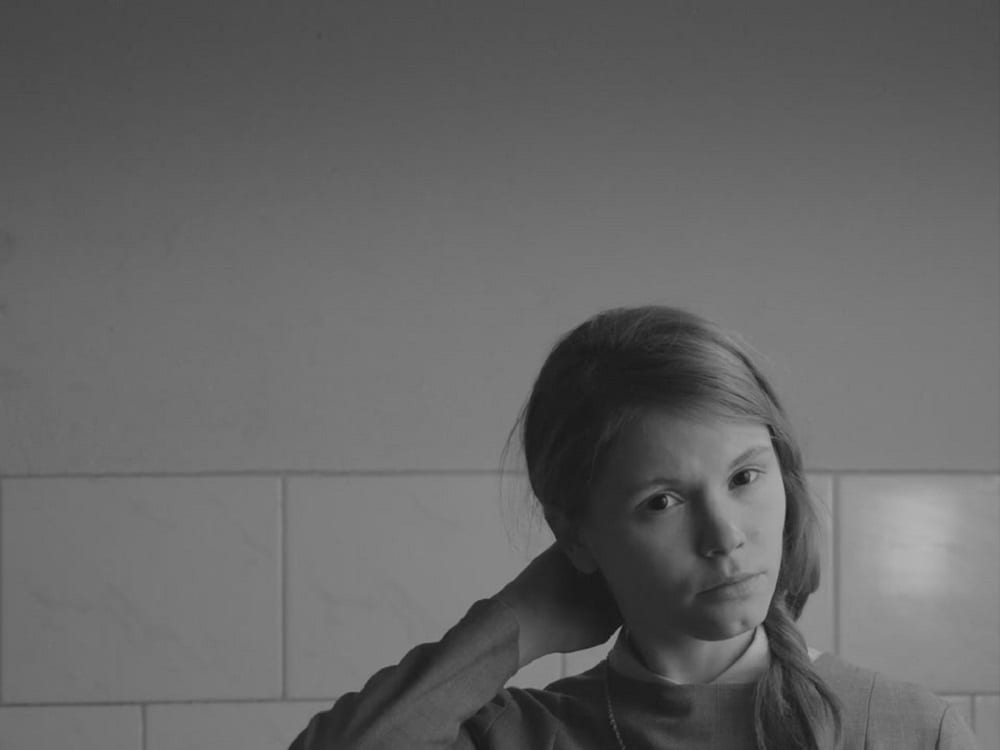In her 2009 film Women Without Men, Shirin Neshat tells the female story during the 1953 coup d’etat in Iran. The film, an adaptation of Shahrnush Parsipur’s 1990 novella, distills the political situation into a compelling story about a group of women whose parallel experiences lead them to the same location despite differences in class and lifestyle. We are first introduced to Munis (Shabnam Tolouei), a radiophile who is disinterested in the marriage prospects her brother, Amir Khan, is forcing onto her. Munis becomes the film’s primary magical-realist thread, acting as omnipresent narrator. With her vague commentary, she helps to generalize the themes for viewers: “Through all this noise, there was almost silence…the sense that everything repeats itself over time.” Shortly thereafter, we meet Munis’s friend Faezeh (Pegah Ferydoni), who comes to visit when Amir Khan is away. It becomes clear that Faezeh has a crush on Amir Khan, who is engaged to someone else. Afterwards, the scene shifts sharply to meet Zarin (Orsi Toth), a solemn prostitute, who flees from her brothel after seeing a customer with no face – another dip into the surreal. The camera switches to a military ceremony where we meet Fakhri (Arita Shahrzad), the oldest and wealthiest of the four women. She gets into a fight with her husband, the honoree, and leaves him rather unceremoniously.
Save for Munis and Faezeh’s friendship, the women are apparently separate in the first segment of the film. They are each, however, in the midst of a conflict or change caused by a man in their life; and each solves the problem in the same way, by making her way to an orchard outside of Tehran. Once there, they develop bonds, facilitated by the wealthy Fakhri, who buys the orchard’s estate and acts as a caregiver to ailing Zarin, as well as to Faezeh after she is assaulted in Tehran. Unlike the others, Munis stays in the city; in her ghostly form, she is percieved only by a Communist Party member whom she befriends, and as such is finally able to get involved with political activity.
The women’s journeys to the orchard are important to Neshat; rather than skipping to the arrival of each woman, she includes long shots of each woman’s journey down the road. The shots of the dirt road from Tehran to the orchard illustrate the class differences among the women. Zarin makes her way to the orchard on foot, slowly, gaunt from hunger and scarred from scrubbing herself raw at the public bath. Following a channel through a gap in the wall, she enters clandestinely, lest the property manager catch her and kick her out. Fakhri’s first trip to the orchard, meanwhile, provides an overt contrast to Zarin’s. She travels down the dirt road chauffeured in a luxury car, and enters through the front gate where she is greeted warmly by the property manager. Both women make their way to the orchard because the men of Tehran are making their lives hard, whereas Fakhri’s wealth certainly makes the journey more comfortable. Munis and Faezeh are socioeconomically in between the other women; Munis accompanies Faezeh as she travels to the orchard on foot, but instructs her that she can just “Knock on the door and go inside,” unlike Zarin. Through these parallel shots, Neshat does a good job of underscoring the intersection between gender and socioeconomic status, a theme that reverberates for her 2009 audience.
Women Without Men was a project spanning over half a decade, beginning as a series of videos exploring each of the women featured in the original 1990 novella by Shahrnush Parsipur. In an interview with Art In America, Neshat describes the challenges of adapting the novella to film: “I couldn’t have picked a more difficult book….Even before I started, my advisors told me to be careful.” An experienced photographer, Neshat responded to the challenge through color theory. In Tehran, the visuals are so muted that some scenes appear almost black-and-white. The shots in the orchard, though, are much brighter, featuring the vivid greens and jewel tones of the surrounding nature. suggestive of the happiness and safety the women experience in the orchard. The orchard plays a restorative role for the women; we see Zarin smile for the first time there, whereas Fakhri gets to take control of her own estate. Faezeh is somewhere in between; she heals from her assault in Tehran, and is involved in planning a party with Fakhri, choosing brightly colored dresses to wear. Zarin remains mainly bedridden, never changing from her white dress; perhaps her condition is unsalveageable despite the healing properties of the orchard.
A fifth woman, Mahdokht, is cut from the original novel because of the difficulty of adaptation. In the same interview, Neshat detailed Mahdokht as “a woman who plants herself as a tree since she is terrified of sexual intercourse but obsessed with fertility. She dreams of producing fruits and seeds that can be disseminated around the globe.” Instead, Neshat gives a bigger role to the orchard’s male gardener, who directly or indirectly brings each of them to the estate; she prioritizes the symbolism of the journey and a clear portrayal of intersectionality.
With Women Without Men, Shirin Neshat succeeds in creating a film whose themes transcend the bounds of history and borders; universal themes come across for viewers uninitiated in Iranian history or culture. Haunting imagery and moments of magical realism pull the film it away from simple historical fiction. Even for viewers who have read the novel, for the visuals of the orchard alone, the film is well worth its 99 minutes.
